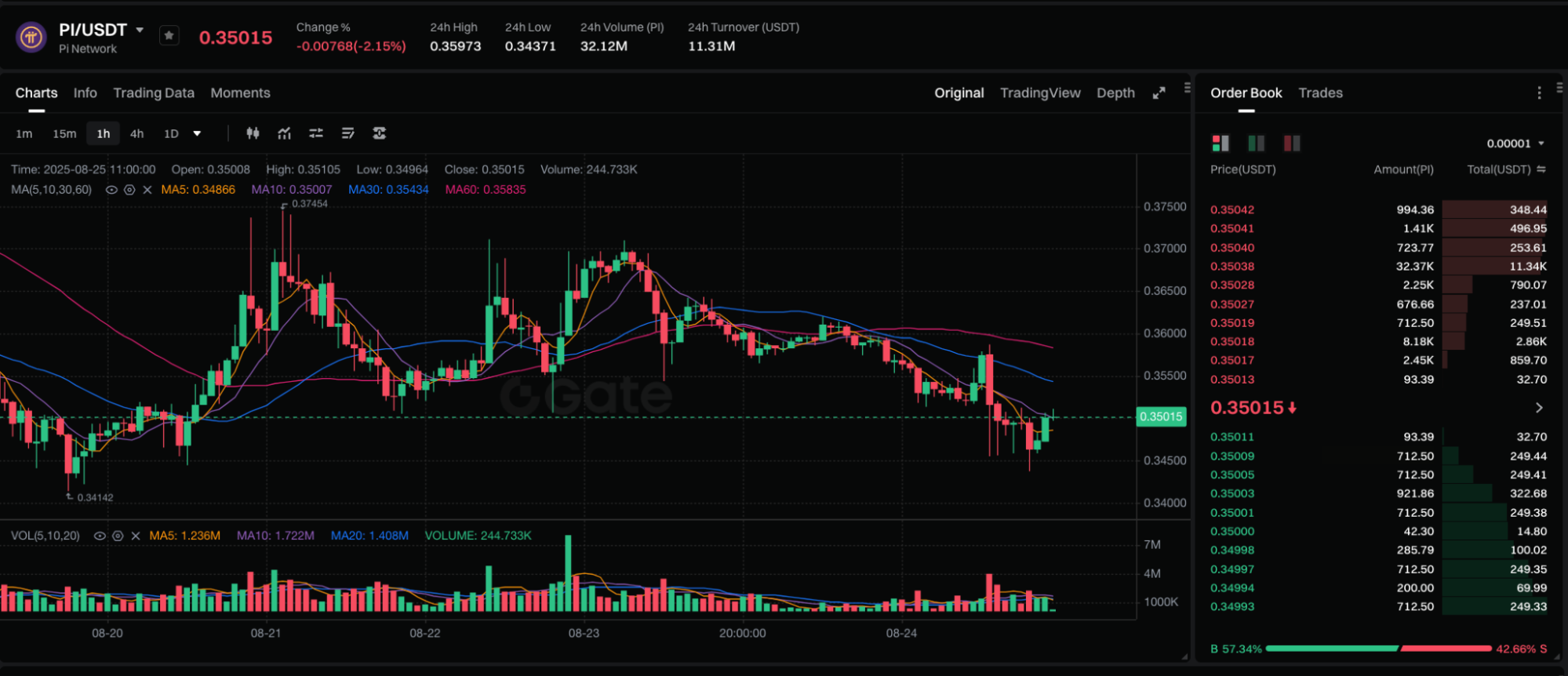Pi Network Price Poised to Surge 150%: Rare Pattern Signals Bull Market
Technical Analysis: Descending Wedge and Volatility Contraction

Chart: https://www.gate.com/trade/PI_USDT
In recent months, Pi Coin has been consolidating within the $0.34–$0.36 range, forming a classic descending wedge pattern. This formation is defined by two downward-sloping, converging trendlines—typically indicating the market is gathering momentum ahead of a breakout. Additionally, the narrowing of the Bollinger Bands indicates decreased volatility, which often precedes a significant price move. If the price breaks above the $0.36 resistance, it could trigger a rally toward $1, which would represent an upside of roughly 150%.
Fundamentals: Ecosystem Catalysts and Potential Risks
Despite the bullish technical setup, Pi Network’s fundamental outlook faces notable hurdles. Since the mainnet launch, token supply has continued to rise. Active ecosystem development and support from major exchanges remain lacking, resulting in weak demand. For instance, Pi AI Studio and Pi App Studio have not yet delivered popular applications, and the Pi Foundation maintains substantial token holdings due to limited transparency, increasing market uncertainty. On the upside, a few potential catalysts—including the 2025 hackathon, new app launches, implementation of token burn mechanisms, and possible exchange listings—could reduce circulating supply and boost demand. This may support a price increase.
Investor Focus: Key Support and Resistance Levels
Currently, Pi Coin is trading around $0.35, which is near its all-time low. If the price falls below the $0.32 support level, further downside could follow, invalidating the prevailing bullish trend. Conversely, a breakout above the $0.36 resistance could ignite a rally toward the $1 target, representing a potential upside of approximately 150%. Investors should monitor these key support and resistance levels to make informed investment decisions.
Conclusion
Pi Network stands at the intersection of technical and fundamental drivers. While rising supply and gradual ecosystem development poses ongoing challenges, technical patterns are signaling a strong potential rebound. If near-term catalysts succeed in accelerating ecosystem growth, Pi Coin may break through the $1 barrier. This could result in an estimated gain of about 150%. Investors should closely monitor key support and resistance levels. Base investment strategies on careful analysis.
Related Articles

Pi Coin Transaction Guide: How to Transfer to Gate.io

What is N2: An AI-Driven Layer 2 Solution

How to Sell Pi Coin: A Beginner's Guide

Grok AI, GrokCoin & Grok: the Hype and Reality

Flare Crypto Explained: What Is Flare Network and Why It Matters in 2025
